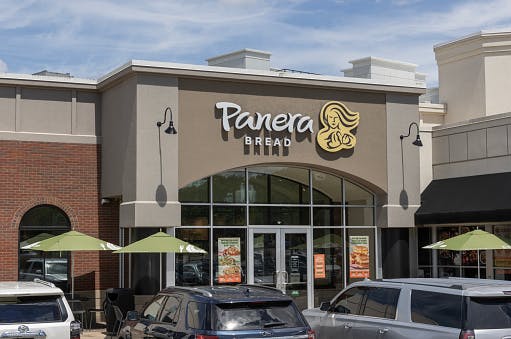Panera’s million-dollar turnaround starts with fixing its salads — as Americans drift away from iceberg lettuce
The fast-casual chain is undoing years of cutbacks with a new strategy dubbed “Panera RISE.”
After years of penny-pinching that left sandwiches smaller, salads blander, and cafes understaffed, Panera is trying to win back customers with a sweeping, strategic reboot. On Tuesday, the chain unveiled a multiyear turnaround plan, layering in a refreshed menu and nicer stores, as its revenue slipped from its 2023 peak.
Lettuce get this bread
Indeed, the salad-soup-bread giant saw its sales fall more than 5% to $6.1 billion last year, per Technomic — a slump that predates the broader “slop-blow recession” that’s started hitting chains like Chipotle, Sweetgreen, and Cava.
According to QSR’s Top 50 fast-food rankings, Panera still pulled in the highest sales per unit among major sandwich chains in 2024 — but its annual store growth came in at just 1.6%, trailing rivals in the same category as well as adjacent players like Taco Bell, Qdoba, Chipotle, and Cava.
Traffic has been eroding for years amid growing complaints about Panera cutting corners on ingredients and labor to offset inflation. Customers found themselves wrestling with unsliced cherry tomatoes and cutting their own avocados, per CNBC, while portions slimmed down. The company even switched from full romaine to a half-iceberg blend last summer, a move Panera Brands CEO Paul Carbone acknowledged “saved a significant amount of money across the chain.”
Indeed, romaine lettuce is roughly twice as expensive as iceberg, per Bureau of Labor Statistics data. And, while lettuce may not sound like a big deal, Panera has been sailing toward cheap icebergs at a time when American tastes have gone more premium — if the decades-long shift in consumption is any indication.
According to USDA data, the nation’s per-capita availability of head lettuce (made up overwhelmingly of iceberg) has fallen to roughly a third of its 1989 peak as of 2022, while romaine has surged more than 3.5x over the same period, overtaking its crispier counterpart.
Though iceberg remains more common than greens like spinach and kale, consumers might be increasingly associating romaine’s darker, greener leaves with better freshness and quality, which Carbone seems well aware of: “No one likes iceberg lettuce. No one looks at that salad and says, ‘That’s appetizing,’” he told Nation’s Restaurant News.
With the overhaul plan, Panera is now bringing back full-romaine salads, boosting ingredient counts from five to eight, and restoring portion sizes — along with more human staff and a cafe makeover — as it aims to reach over $7 billion in annual sales by 2028.
